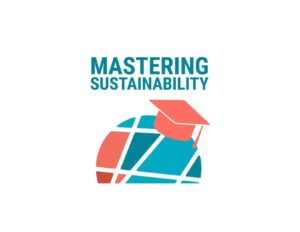The TikTok Trade Corridor: Alt-Globalization in Real Time
Photo Sourced from Wikipedia Commons
Donald Trump believed he was the master of the trade chessboard — unilaterally imposing tariffs, rewriting agreements, and punishing China with brutal economic policies. But he made one critical error: he assumed everyone else was an NPC. While he was focused on crushing China’s state apparatus, Chinese manufacturers flipped the script — not with retaliation, but with innovation.
They didn’t fight back with top-down policy. They opened TikTok. And within hours, they were talking directly to American consumers.
“Chinese manufacturers just hit the Uno reverse.” — TikTok user
While political pundits debate tariffs and trade deals, an unregulated and largely unrecognized transformation is already underway. In the last 48 hours, TikTok, once dismissed as a frivolous Gen Z platform, is becoming an unexpected vector for a new kind of globalization — peer-to-peer, frictionless, and subversively powerful.
Alt-Globalization, Not Anti-Globalization
This is alt-globalization: a new trade infrastructure, not built by governments or corporate trade alliances, but by platform affordances and civilian ingenuity. On TikTok, Chinese OEMs — the same manufacturers behind Prada, Hermès, Lululemon, and Nike — now speak directly to consumers, showcasing their goods, revealing the price gouging of luxury brands, and offering direct purchasing options. Even with tariffs as high as 145%, the direct-to-consumer price undercuts Western retail.
#TradeTok is economic warfare wrapped in dupe culture and unboxing videos.
The result is a collapse of the old margin stack. Brand prestige, retail markups, even regulatory frameworks are increasingly irrelevant when a buyer in Kansas can buy a Hermes Birkin bag sans logo from a Chinese factory for $1400 — or Lululemon leggings for a tenth of the price from the same OEM, shipped direct.
Real-Time Examples of Disruption
These aren’t hypotheticals. They’re happening now:
- One viral video even jokes that “Chinese manufacturers just hit the Uno reverse,” capturing the moment Chinese OEMs began flipping the script — selling directly to U.S. consumers, bypassing brands, retailers, and tariffs alike.
- A Chinese auto-parts manufacturer TikTok to American car enthusiasts, offering high-performance components at a fraction of the dealer price.
- A woman on TikTok holds up a high-end luxury bag and explains it came direct from the source — the exact factory that makes the designer label version — for under $100.
- Another TikTok shop boasts of being the original supplier for Lululemon, now selling identical athletic wear direct to global consumers.
TikTok isn’t just content — it’s the front-end interface for a decentralized global trade network.
It routes around states, sanctions, and tariffs the same way BitTorrent routed around copyright law. What we’re witnessing isn’t just a quirky e-commerce moment — it’s a shift in global economic power.
Mexico and the Rise of Trade Tourism
Within the same 48 hours that Chinese OEMs began targeting U.S. audiences on TikTok, a second wave emerged: Chinese manufacturers communicating in Spanish, offering direct-to-consumer access across Latin America. Mexico is rapidly becoming a key node in this new supply chain.
Soon Americans will be crossing into Mexico to purchase goods — iPhones, laptops, and other expensive necessities — exempt from U.S. tariffs and corporate markups.
Mexicans fluent in TikTok and WhatsApp will become informal brokers between U.S. demand and Chinese supply. Some will operate as local distributors or gray-market retailers, sidestepping formal trade infrastructure entirely. This is the same logic that drove medical tourism in the last decade, now applied to everyday consumer goods.
As Chinese manufacturers begin warehousing in Mexico — a growing trend — the potential for a parallel import economy rises. American consumers bypass tariffs, pay pesos or cash, and walk back across the border with bootstrapped middle-class lifestyle bundles.
“Trade tourism” may become the new “medical tourism” — a grassroots workaround for broken domestic affordability.
Civilian Diplomacy in Motion
TikTok is functioning as a civilian diplomacy platform, connecting people, stories, and transactions across national borders without a single diplomat in sight. Americans are being introduced to real Chinese lives, products, and perspectives, not filtered through state or media narratives, but shown in daily life, DIY videos, and unfiltered livestreams.
A New Path to the American Dream
This shift has massive implications for how we define prosperity. For decades, the American Dream was synonymous with earning more — chasing six-figure salaries to keep up with the spiraling costs of life. But what if the equation flips?
What if prosperity isn’t about earning more — but needing less to live well?
If everyday goods drop 4x in price, the pressure to constantly increase income recedes. Alt-globalization offers a new version of the American Dream — not based on climbing a corporate ladder, but on access, dignity, and affordable quality of life.
People won’t need to earn $100K/year if the same lifestyle can be achieved with $30K. This is economic adaptation, not decline. It’s not about working less — it’s about working differently, participating in distributed trade, running micro-enterprises, or becoming part of the platform-based merchant class.
It’s a vision of a middle class rebuilt — not through trickle-down economics, but through peer-driven trade, civilian ingenuity, and the collapsing cost of everything.
The future is being drop-shipped one TikTok video at a time.
This is what alt-globalization looks like: agile, local, transnational, and unstoppable. It’s not a backlash to the old order. It’s a workaround. And it may end up being the most potent check on authoritarian nationalism the world has.
In the shadow of trade wars, a new global commons is being built — on TikTok, Shopify, Temu, WhatsApp, and other civilian platforms. Its architects are not heads of state, but creative everyday people who want access, dignity, and better options.
And this is just the beginning. What happens when the same bottom-up dynamic drives energy, education, and infrastructure? In my next dispatch, we’ll explore the looming solar deflation wave — and how alternative energy could reach a civilian tipping point just like trade has.
References & Sources
TikTok as a Trade Platform
Examples of Direct OEM Engagement
- Chinese auto-parts livestream example: TikTok video
- Luxury bag direct-sale TikTok: TikTok video
- OEM for Lululemon on TikTok: TikTok video
Mexico as Trade Tourism Hub
- Mexico trade tourism TikTok: TikTok video
Rise of Gray Market Channels
- Bloomberg: “Lululemon, Hermes Copies Entice China’s Shoppers Away From Labels”
- Wired: “Temu and TikTok Are Reshaping Global Retail”
Economic Context & Inflation Pressures
U.S. Census Bureau: In 2021, nearly half (49.0%) of renter-occupied households were cost burdened, spending more than 30% of their income on rent, up from 46.3% in 2019. ?Census.gov
Pew Research Center: In 2022, the share of total U.S. household income held by the middle class fell to 43%, down from 62% in 1970, indicating a significant shift in income distribution. ?Pew Research Center
Bureau of Labor Statistics: From 2021 to 2022, consumer prices rose by an average of 8.0%, with inflation peaking at 9.1% in June 2022, highlighting the financial pressures on consumers. ?Bureau of Labor Statistics
Brookings Institution: Rising housing costs are increasingly burdening middle-class families, particularly renters, as they face higher monthly expenses and limited affordable options. ?Brookings+1Brookings+1
About the Author
Margarita Quihuis is a peace technologist, behavior design expert, and Silicon Valley veteran. She’s the executive director of the Peace Innovation Lab at Stanford, former director of Astia (the first tech incubator for women), and a pioneer in funding women and founders of color. Her work spans venture capital, human-centered design, and systemic innovation for peace. Margarita splits her time between California and Mexico, where she continues to build the future we all deserve.
Connect with her on LinkedIn.





